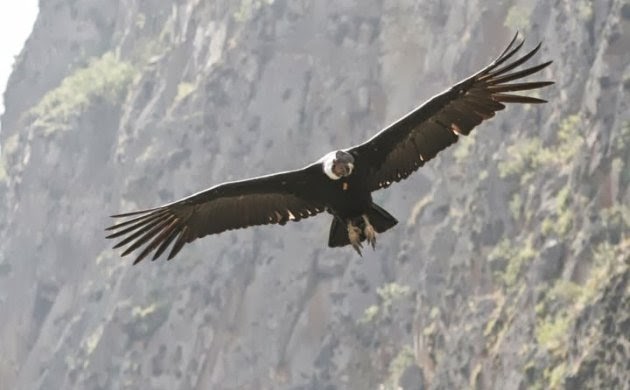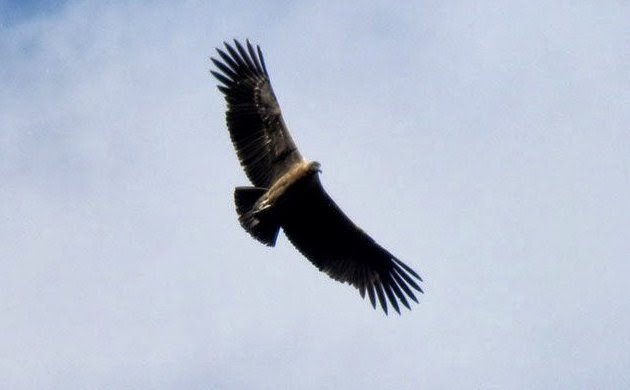
I just read on the news that about 20 Andean Condors (Vultur gryphus) were poisoned in Chile. The birds were observed crashing into the rocks high in the Andean mountains near a hydroelectric power plant. Other birds were seen crash landing. As Chilean officials and volunteers rescued 17 birds they noticed the birds were foaming from the beak. Another sick condor and two dead ones were found nearby. Later it was determined these condors suffered from organophosphate poisoning after they were exposed to insecticides used for agriculture.
Unlike the unintentional poisoning of these condors in Chile, people in other parts of the Andes set poisoned bate to eliminate condor. This is rather bizarre and contradictory. The predominantly Quechua people of the high Andes have traditionally revered the Andean Condor as symbol of majesty, a mythical master of the skies. Condors are well represented in their culture and traditional art where they are held as a respected figure. Unfortunately, contemporary people from the high Andes are beginning to see condors as the enemy; a predator that will kill and eat livestock. Condors as predators is an unfortunate reputation passed from generation to generation.
Andean Condors are vultures and feed exclusively on “carrion” dead animals. The attribution of condors as killers seems accidental. It is true that condors eat dead animals. It is also true that condors will spot cows and other livestock giving birth and guard the animal to be there and take advantage of the placenta and other leftovers. The problem comes during times of low food available to condors when they congregate around a birthing animal. Apparently condors rush to get what is left and will continue pulling the umbilical cord resulting in the newborn’s dead. After a while, condors will continue eating the now dead animal and this is what people witness and believe condor intentionally killed the animal and then ate it.
Young Andean Condors seem to be the most affected by poisoning in the Andes. Photo: Alexander More.
Populations of Andean Condors have experienced a steady decline in the last three decades. It is estimated that only a few thousand birds remain in the wild. The species is being re-introduced in Colombia and Ecuador where the condors are either locally extinct or persist in very low numbers. The cause of this decline is not necessarily poisoning by humans, but this is just a contributing factor.
Fortunately, there is an interest for preserving the Andean Condor and preventing an outcome similar to its California cousin. Campaigns to educate people regarding what condors actually do and how to prevent it have been underway. In some regions people will bring their livestock to safe areas to prevent incidents with Andean Condor and Andean foxes. It is expected that education will result in these enormous birds with a wingspan of up to 10 feet continue gliding pass the snow-capped mountains of the high Andes.
Featured Image by Javier Colmenares.














I fell in love with the Andean Condors at the Buffalo Zoo as a child, and that was one of the factors that fed into my life-long interest in birds. I’m saddened that these beautiful birds are getting the same prejudiced treatment as so many species that humans designate ‘the enemy’.
Hi Carrie,
It is unfortunate that certain believes have such terrible consequences for Andean Condor. The good news is that through educational programs people’s perception of condors can be improved. This in turn should result in fewer or no condor poisoned in the future.